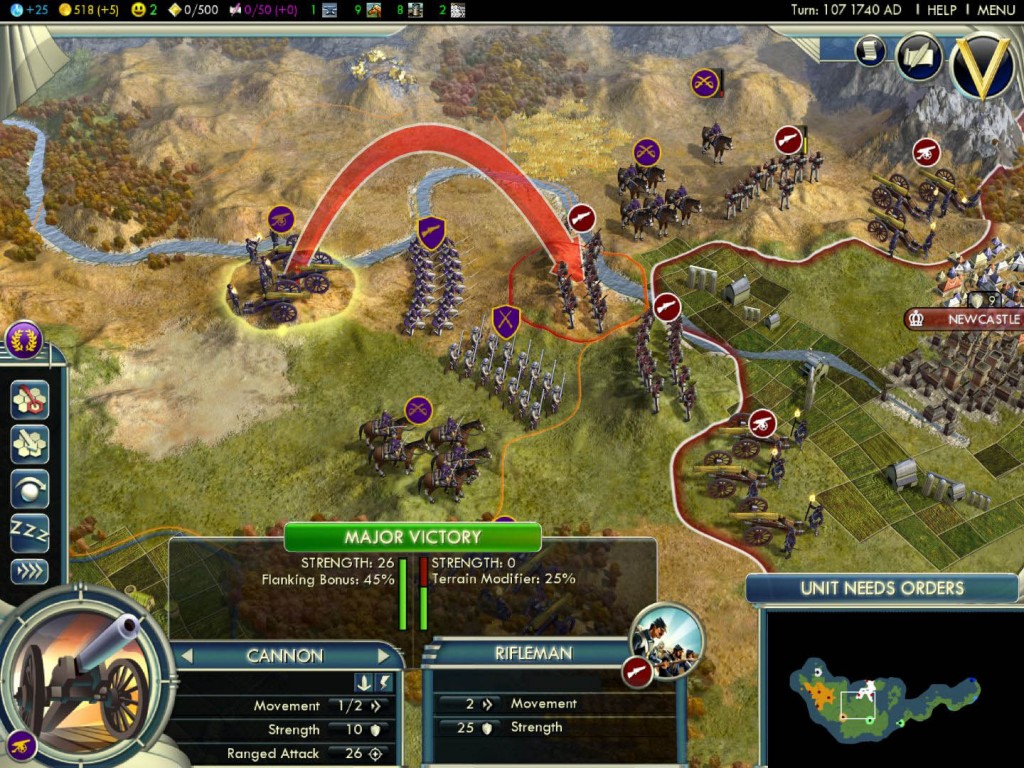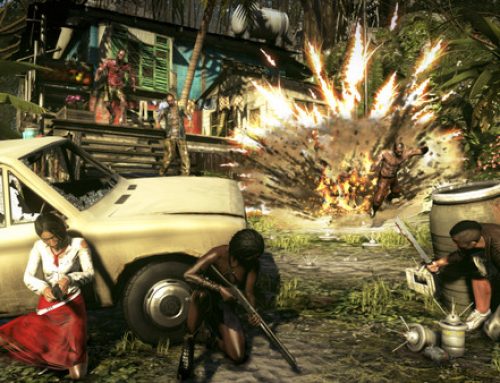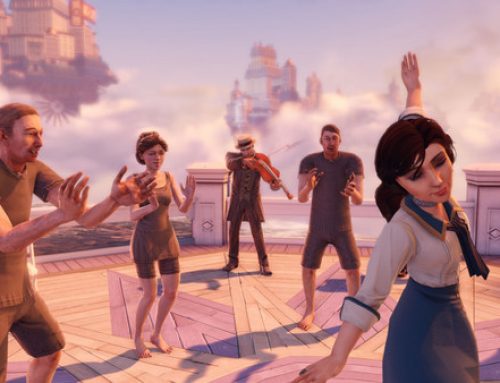
Firaxis Games is shaking up combat for "Civilization V" by letting only one unit occupy each hex on the game board.
My visit to E3 in Los Angeles last month marked the second time I’ve gotten a look at “Civilization V,” the next title in Firaxis Games’ ridiculously addictive series in which players found a civilization at the dawn of recorded history and guide it into the modern era and beyond.
As with past titles, you’ll take your merry band of savages, found a city, research technology, try to keep your people happy, wage wars, engage in diplomacy and try out different forms of government, among other activities. As with past “Civ” games, No. 5 should also be a fun way to teach teenage gamers a little history while they’re conquering the world.
A history major myself, I got my first taste of “Civilization” playing on my college roommate’s computer. Needless to say, I was hooked, and “Civ II” was the first game I purchased when I bought my own computer a couple of years later. That title, released in 1996, was easily the game I played the most during my decade without a game console, and is without a doubt my single most played video or computer game. Though I’ve owned both “Civ III” (2001) and “Civ IV” (2005), I’ve been a dabbler, at best, in those games since becoming primarily a console gamer. “Civilization Revolution,” which was released in 2008 for the Xbox 360 and PlayStation 3, on the other hand is a different story. I still pop that one in on occasion.
In other words, though the bulk of my “Civ”-playing days are in the distant past, I’m no lightweight. I also admire the way the series’ developers have resisted the temptation to maximize profits by cranking out sequels that support only incremental tweaks. In taking a look at “Civilization V,” I’ve spotted a number of subtle refinements, but also a few sweeping changes. Here’s a look at a few of the changes we can look forward to when the PC game releases on Sept. 21 in North America, Sept. 25 everwhere else. (A Mac version is planned, but no release date has been announced.)
Overhauled combat: In past “Civilization” games, war has been defined by the struggle to seize the cities of opposing civilizations. If you want to hold on to what you have, it’s easy to adopt a bunker mentality and just fill your cities with massive numbers of defenders, throw up some city walls and set about trying to win a nonmilitary victory while your opponents continually hurl themselves onto your spears. That won’t be the case in “Civ V,” Firaxis’ Pete Murray explained. That’s because in the new game, the development team sought to take combat out of the cities, so that wars look more like actual wars. Your city will have its own cache of hit points, and you’ll be limited to one military unit on each of the game’s hexagonal tiles (another deviation from past “Civ” games’ squares and diamonds). In other words, you’ll fortify positions all around your key cities. At E3, Murray and producer Dennis Shirk showed the importance of controlling key parts of the game map, such as mountain passes or hilltops adjacent to your cities.
And those hills look fantastic: “Civ V” also sports a new look that’s inspired by satellite images of the sort you’d find on Google Earth. It gives the game an added sense of realism and brings the series into the next decade.
Mod spot: If you’ve read my coverage of the PlayStation 3’s “LittleBigPlanet” and “ModNation Racers,” you know I’m big on games that make it easy for players to create and share new content. The “Civilization” franchise has long been one of the most modifiable PC games around, but for the sequel, Firaxis is taking it a step further. Rather than just releasing the usual mod tools and letting bedroom programmers have at their game, Firaxis plans to set up an in-game hub for the submission, review and approval of user-created mods. Players of “Civilization V” will be able to download, play and rate the most popular mods, without the need to hunt for mods on all corners of the Internet.
City states: Past “Civilization” games have tried to challenge players with barbarians, free-standing units that operate independently of any nation and can capture and hold territory. But once you get past a certain point in the game, barbarians aren’t much of a threat. They’re also, not surprisingly, lousy at accomplishing anything with any cities they might happen to seize. “Civ V” gets around this problem by introducing city states, essentially one-city civilizations that can curry favor with and manipulate the game’s numerous civilizations. You might, for example, find yourself going to war to protect a strategically located city-state the same way the Germans and French repeatedly fought over Alsace-Lorraine.
Blogger’s note: This post was supposed to appear Friday morning, when I finished it, but due to an unforeseen glitch, it went live with a posting date in late June, causing it to become lost in the shuffle until I fixed the posting time later.



